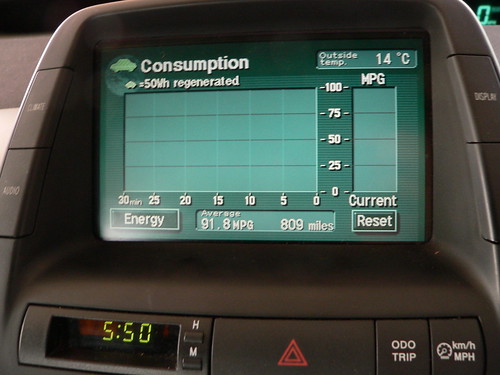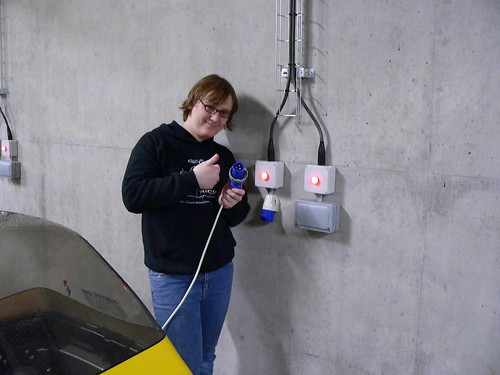Charging discrimination instead of charging for all.
London is often viewed as the EV charging capital of the world. Thanks to the Congestion Charging zone and it’s exemptions for electric and other green vehicles, not to mention the success of the small G-Wiz and similar small electric vehicles London appears, at least on the face of it, to be a brilliant place to be if you want to own an EV.
Not only that, but there’s now over 100 public electric vehicle charging points spread throughout the greater London area. In order to use one, you have to satisfy a series of criteria to ensure that you’re a) an electric vehicle owner and b) that you agree to abide by the fair usage policies the charging points have.
But wait. What’s this? London Boroughs (think of them as small council district within the greater London area) may appear to provide charging points to electric and PHEV vehicle drivers but they’re rather picky about who can use their points.

photo by Shiner Clay
More after the jump
The new European plug.
Welcome folks, to the new charging standard for EVs and PHEVs in the European Union. It’s based on a design by Mennekes, and will support a range of charging options for EVs at anything from a standard 13A, 240V supply through to a mighty 400V three-phase, 63A supply.
Best of all, it seems like the Mennekes system is designed with interoperability in mind and may even offer some retro-fitting for suitable vehicles.
With Elektromotive set to roll out a series of upgrades to it’s charging points in the UK to allow for a ‘pay as you go’ charging system (as well as a new version of their Elecktrobay charging station supporting the new standard) there really isn’t a better time to look into going electric.

More details of the new charge standard after the jump
Looking ten years into the future of plug ins.
Ten years ago, we were still in the last great EV revolution. The EV1 was still on the road (although GM had by this time decided to no-longer make them), and the general public were getting used to seeing funky charging stations. At least, they were used to that in the select areas of the US where electric vehicles were being used.
Europe too, was undergoing something of a mini-revolution. The french conglomeration of Citroen, Peugeot and Renault were making commercially available electric cars and vans. A few years later, just like the EV1, RAV4EV and Ford Th!nk to name but a few, these vehicles disappeared from the market.
Here we are, in 2009, with lots of exciting developments in the world of plug in vehicles. As someone heavily involved with plug in vehicles it feels to me as if we’re just about to enter a truly golden age of the electric vehicle. But we’ve seen this kind of activity ten years ago. How do we know it’s not going to end in tears again?

More after the jump.
Second-tank update on the DIY Plug-in Prius
One of the personal projects that keeps me busy is my own plug in car – my 2004 Toyota Prius. I converted the car from a regular Prius to a plug in Prius earlier this year. After a few initial hiccups with a bad battery causing one of the additional battery packs to die prematurely I’ve had a few months worth of plug in hybrid driving. But at the end of the day I have a driveable PHEV Prius, which I have the satisfaction of knowing I converted.
Today I filled up my car after finishing the second full tank of gas since converting the car to a plug in. The last time I filled up was on April 3rd. Today is May 8th. Admittedly, I was away for seven days during this period, but keeping up with this I’ll be only filling up once a month.

More after the jump
Some exciting news!
Relax! It’s okay to plug in!
Since the UK government announced that they plan to launch a scheme in 2011 to give new car buyers up to £5,000 towards the purchase of a fully electric or plug-in hybrid car there’s been quite a lot of press coverage for electric cars. Some good, and some bad.
Amongst those who seek to discredit the environmental, economic and social impact of electric vehicles there have been many who have tried to scaremonger the general public that a nation of electric vehicles and plug-in hybrids will cause mass power outages of a scale big enough to rival the famous brown-outs of the East Coast United States of the early part of this century. If these naysayers were to be believed a whole country of electric cars plugging in would be catastrophic for the rest of society.
Well, guess what? A study, conducted by LandRover-Jaguar, Ricardo, Amberjac Projects and E.O.N, has concluded that the UK PowerGrid is capable and ready to support a large amount of electric and plug in cars already. So next time you plug in, you know you’re not denying anyone some much-needed electricity and causing mass brown-outs. That’s nice, isn’t it?

Read more after the jump.
A plea to all EV makers. Learn how to sell a car…
If you’re wondering about the title of this post It’s quite simple. I’m fed up dealing with all the excuses that car companies make when trying to sell EVs. It’s not going to make them popular. Plus it gives the Jeremy Clarksons of the world ammunition in their mission to hate anything without a V8 and a huge exhaust. And who can blame them. When so many in the EV world make silly claims about their cars or silly excuses about how they perform.
I’ve been thinking about this post for quite some time, ever since I went for a test-drive for an EV in London and found that the company offering the test drive were about as professional as buying a car from a dodgy guy in a pub car-park. Why? It was poor organisation, delivery and knowledge. Oh, and a car which was nearly empty. Not good publicity. (They’ve since improved greatly).
